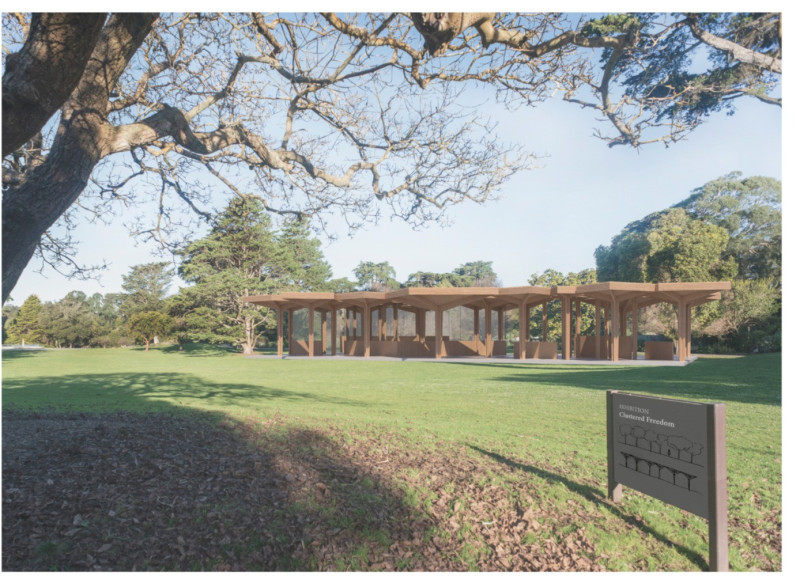5 key facts about this project
Sustainable Design Approach
This pavilion stands out with its commitment to sustainability, utilizing materials that enhance both structural performance and aesthetic appeal. The primary materials include wood, glulam (glued laminated timber), CET panels, and concrete. Each of these materials is selected for its ecological qualities, ensuring the structure is lightweight while maintaining durability. The use of glulam allows for expansive open spaces without the need for excessive structural supports, thereby improving the interior experience. The CET panels in the roof design manage rainwater efficiently, showcasing innovative thinking in environmental management.
Unique Structural Elements
The architectural design incorporates several unique structural elements that differentiate it from conventional pavilions. The seamless transition between interior and exterior spaces encourages interaction with nature, enhancing the user experience. Large overhangs provide shade and shelter, while strategically positioned windows frame views of the surrounding environment, inviting natural light into the pavilion. The layout is adaptable, allowing for diverse functions, whether used for gatherings, events, or educational purposes. This flexibility in space organization enhances the pavilion's usability and aligns with contemporary architectural trends focused on multifunctional spaces.
Material Integration and Aesthetic
A notable feature of this project is its aesthetic integration within the landscape. The choice of materials complements the natural setting, with wood providing not only structural support but also a tactile element that connects users to the natural world. The overall form of the pavilion, guided by the contours of the site, reflects a thoughtful consideration of the environment. The pavilion’s design strives to create a dialogue between humans and nature, inviting exploration and interaction.
For more insights into the architectural plans, sections, designs, and ideas behind this project, it is encouraged to explore the detailed presentation. This exploration will provide a comprehensive understanding of the architectural intent and execution present in this thoughtful design.























